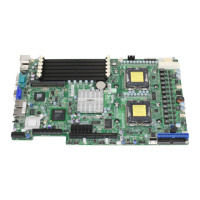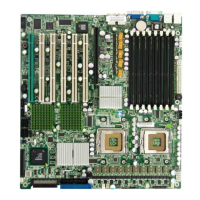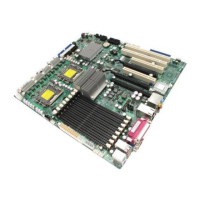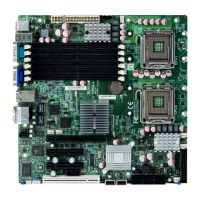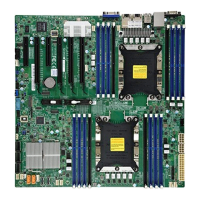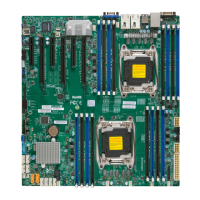Do you have a question about the Supermicro X7SBi and is the answer not in the manual?
Explains the motherboard's health monitoring features like voltage and fan status.
Provides precautions for handling electronic components to prevent ESD damage.
Guides users through the correct installation of the CPU and its associated heatsink.
Explains the procedure for installing DDR2 memory modules into the motherboard slots.
Outlines procedures to diagnose and resolve common system issues like no power or no video.
Covers advanced BIOS settings including Boot Features, ACPI Mode, and Processor Options.
Explains how to configure boot priority and select bootable devices.
Lists and explains various BIOS POST messages indicating system errors during startup.
Guides on configuring BIOS for SATA RAID functions, including enabling RAID.
Explains how to create, delete, and reset RAID volumes using the utility.
Provides steps for installing Windows OS with RAID functionality.
Guides on configuring Adaptec SATA RAID for various operating systems.
Details the Adaptec RAID Configuration Utility for managing arrays and disks.
Provides steps for creating RAID arrays, including assigning properties and bootability.
| PS/2 ports quantity | 2 |
|---|---|
| USB 2.0 ports quantity | USB 2.0 ports have a data transmission speed of 480 Mbps, and are backwards compatible with USB 1.1 ports. You can connect all kinds of peripheral devices to them. |
| USB 3.2 Gen 1 (3.1 Gen 1) Type-A ports quantity | 0 |
| Number of SATA connectors | 6 |
| Chassis intrusion connector | Yes |
| Number of DIMM slots | 4 |
| Supported DIMM module capacities | 1GB, 256MB, 2GB, 512MB |
| Memory voltage | 1.8 V |
| Memory channels | Dual-channel |
| Supported memory types | DDR2-SDRAM |
| Maximum internal memory | 8 GB |
| Supported memory clock speeds | 667, 800 MHz |
| BIOS type | EEPROM |
| ACPI version | 2.0 |
| BIOS memory size | 16 Mbit |
| RAID levels | 1, 5, 10 |
| Supported storage drive interfaces | IDE/ATA |
| On-board graphics card model | AMD ES1000 |
| On-board graphics card memory | 32 MB |
| Storage temperature (T-T) | -40 - 70 °C |
| Operating temperature (T-T) | 10 - 35 °C |
| Storage relative humidity (H-H) | 5 - 95 % |
| Operating relative humidity (H-H) | 8 - 90 % |
| Processor socket | LGA 775 (Socket T) |
| Intel Xeon series | X3200, 3000, X3300 |
| Processor manufacturer | Intel |
| Processor number of cores supported | 2, 4 |
| Wi-Fi | No |
| Ethernet interface type | Gigabit Ethernet |
| Sustainability certificates | RoHS |
| Motherboard chipset | Intel® 3210 |
| Motherboard form factor | ATX |
| Depth | 243.8 mm |
|---|---|
| Width | 304.8 mm |


